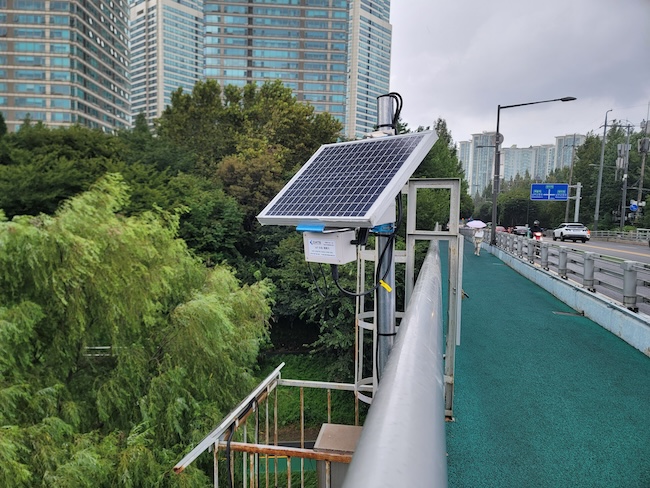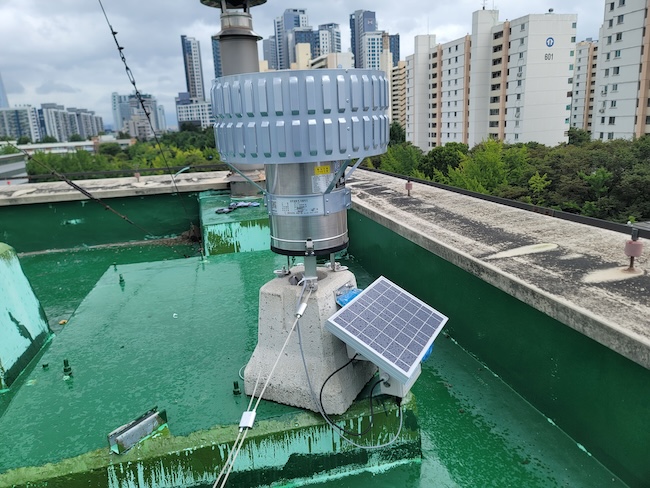
Gangnam District in Seoul has launched a pilot program for an advanced flood monitoring and prediction system. (Image courtesy of Gangnam District)
SEOUL, Sept. 12 (Korea Bizwire) – In an effort to minimize damage from localized extreme rainfall, Gangnam District in Seoul has launched a pilot program for an advanced flood monitoring and prediction system, local officials announced on September 11.
The system, which combines artificial intelligence (AI) and Internet of Things (IoT) technologies, has been dubbed the “AIoT-based Flood Inundation Monitoring and Prediction System.”
It represents a significant step forward in the district’s efforts to adapt to increasingly unpredictable weather patterns attributed to climate change.
Last month, the district completed the installation of measurement equipment at four key locations: Gaepo 2-dong Community Center, Yeongdong Bridge 4, Daechi Station Intersection, and Seonjeongneung Park. These devices are designed to measure rainfall, river levels, and inundation depth.

Gangnam District in Seoul has launched a pilot program for an advanced flood monitoring and prediction system. (Image courtesy of Gangnam District)
“The AIoT system collects and reports data every minute,” a district official explained.
“By integrating this new data with existing public data on water levels in the Yangjaecheon Stream, Tancheon Stream, and Han River, we can now forecast potential flooding up to three hours in advance, providing crucial preparation and evacuation time.”
One of the system’s key features is its ability to continuously improve its performance. After a rainfall event, the AI relearns from the actual outcomes, enhancing its predictive capabilities for future events.
The district has also emphasized the system’s ease of installation, noting that the compact, all-in-one devices can be set up without the need for extensive power or communication infrastructure work.
Cho Sung-myung, the head of Gangnam District, stated, “This system allows us to proactively respond to extreme rainfall events caused by climate change.”
He added, “We will continue to actively introduce smart systems utilizing cutting-edge technology to build a disaster response system that prioritizes the safety of our residents.”
Kevin Lee (kevinlee@koreabizwire.com)






